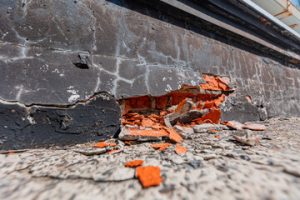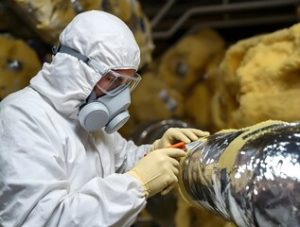Foundation repair is essential to keep your home safe and stable. Professional repairs provide long-lasting solutions that ensure your home’s safety and preserve its value.

The right repair method depends on the extent of your foundation damage. Hairline cracks may indicate normal settling, while stairstep or bowing walls require immediate attention. Visit Website to learn more.
Pilings are long cylinders of concrete or other strong material that are pushed into the ground to provide support for structures built on top. They are used when a shallow foundation such as spread footings cannot adequately support a home, and they transfer loads to a deeper layer of load-bearing soil or rock. They can also be used to reinforce a existing, damaged foundation or as a replacement for an existing pile in cases where a seismic event has caused the pile to fail.
There are multiple types of pilings, but the type used in foundation repair usually consists of concrete. These long cylinders are sunk beneath the ground and then have lengths of steel or rebar embedded within them to strengthen their structure and create a more tensile (stretchable) foundation. These piles can be made on-site with a concrete mix, or precast from a factory to the project specifications and then injected into the ground using hydraulic hammers. They can be driven deep into the earth, even into bedrock in some cases.
Concrete piles are especially useful in areas with expansive clay soil. These types of soil can absorb a lot of water, which causes the clay to expand and exert pressure on the foundation. Over time, this can cause a wide range of problems for homeowners, from sagging floors to crooked windows and doors that won’t close.
Because concrete piles aren’t attached to the home like push piers, they rely on compression rather than skin friction for support. This can make them susceptible to shearing forces, particularly during seismic events. These forces can cause the piles to angle or shear off of the soil underneath the foundation, which can cause the home to move.
The good news is, the engineers who design and install concrete piles are familiar with these risks. They can hybridize the design to mitigate these effects, or use a different method called a push-pier system, which is similar in function to concrete piles. This method involves installing a remedial bracket mounted to the manicured foundation footing, and then driving a series of piers into 3×3 excavation holes that are dug below the footing. The piers are kept straight by a guide sleeve and driven until they reach bedrock or a sufficiently load-bearing soil layer.
Slab Jacking
When concrete slabs sink, it can cause problems that affect the entire home. Cracks may form in walls and floors, walkways become hazardous and pests can enter the space. If a problem is not addressed quickly, further damage can occur and foundation repair may be necessary. Fortunately, there are several ways to level sunken slabs of concrete without the need for replacement. One of the most common methods is slab jacking, which involves injecting grout or polyurethane foam beneath the surface to lift it back up. The process is fast, efficient, and can usually be completed in a few hours. This is significantly less invasive than tearing down and replacing the existing concrete, and it can be done at any time of year.
The process begins with a rock drill that creates holes in the affected concrete. These holes are then filled with a mixture of mud, cement and water. The slurry is pumped into the holes and into the soil voids under the slab. The weight of the slurry and pressure from the concrete slab itself helps to stabilize and lift the slab. Once the slab is lifted, it is carefully monitored to ensure that it remains evenly raised. The drilled holes are then sealed to protect the surrounding concrete and prevent moisture and debris from entering the hole and causing further problems.
Mudjacking is less invasive than alternative methods of raising sunken slabs, and it does not require any digging or heavy machinery. In addition, it does not disturb landscaping or leave behind any dust or debris. However, it is not ideal for every situation. For example, if there is a large void under the slab that cannot be filled by mudjacking, the weight of the concrete could crack it rather than lifting it. In such cases, helical piers are often a better option for stabilizing and lifting the structure.
Another downside of mudjacking is that it only works on slabs that are intact and have sunk due to soil issues. It cannot be used to lift severely damaged or cracked concrete slabs, and it is not appropriate for repairing detached garages, sunrooms, gazebos, porches and other amenities that are built on a slab foundation.
Foundation Wall Repair
Foundation walls can become cracked and bowed due to a variety of issues, including expansive clay soil, soil pressure or construction defects. Regardless of the source, bowing and cracking foundation walls can be extremely dangerous for homeowners and must be repaired promptly to ensure safety. Olshan’s team of expert structural technicians can help determine the cause of your wall problems and create a customized repair plan to stabilize and strengthen your basement or crawl space walls.
Cracks in foundation walls are a common problem that occurs in all types of homes. While many cracks are minor and may be caused by shrinkage or settlement, others can indicate significant structural damage that requires professional attention. For example, diagonal cracks that extend from corner windows and doors suggest lateral pressure on the foundation and may require immediate inspection and repair.
When assessing foundation cracks, experts recommend having them evaluated by a qualified and experienced contractor. A professional can use a range of methods to identify the type and severity of the cracks and select the best repair method for your situation.
Typically, horizontal and vertical foundation wall cracks are caused by water intrusion or movement of the home’s structure. In these cases, a simple crack sealant can be used to effectively prevent water leaks and preserve the integrity of the foundation.
Horizontal and diagonal cracks in foundation walls, on the other hand, usually indicate significant structural issues such as bowing or lateral pressure from expansive soil conditions. In these situations, carbon fiber straps can be installed to reinforce and stabilize the foundation, preventing further inward movement.
In some cases, it may be necessary to replace a section of the damaged foundation wall with a new concrete wall. This is known as the “same-for-same” method and is often used for bowing and leaning walls that have already shifted significantly in one direction. An alternative solution for bowed and cracked walls is the EverBrace system, which uses steel bracing to both reinforce the existing foundation walls and prevent future movement. This is the most effective long-term solution for repairing bowed and cracked walls.
Foundation Crack Repair
Foundation crack repair involves fixing the cracks in your home’s concrete foundation walls to prevent further structural damage. This can be a quick and inexpensive project, especially if the cracks are minimal or don’t leak. Cracks in poured concrete are very common and usually don’t represent any serious problems unless they grow wider over time or leak water. Homeowners often attempt to fix cracks with masonry caulk and hydraulic cement, but these repairs are not permanent and tend to need to be repeated over the years.
Hairline cracks are very thin fissures in the surface of the concrete that appear during the early curing process and are not a significant cause for concern unless they widen or continue to spread. To check for these cracks, simply see if a nickel fits snugly in the crack. A professional can seal these cracks with silicone, acrylic, or urethane and they will stop water from entering the cracked areas.
Static cracks, on the other hand, are another story altogether. They are a sign that the foundation has settled slightly over time and is no longer supporting the structure adequately. If a homeowner notices that their foundation wall is showing signs of static cracking, they should reach out to a professional immediately.
If the cracks are in the retaining wall, a simple re-leveling can often be enough to remedy the problem. However, if the cracks are in the foundation itself, it is often necessary to do some more extensive work on the basement or cellar floor as well.
A more serious form of cracking is when the concrete has begun to separate from its surrounding soil. This can result in the home sagging and bowing, as the wall collapses into the space below it. If this is happening, the most effective solution is a wall brace system like PowerBrace or EverBrace. These systems involve steel beams that are secured to the joists and walls, and tightened over time to reverse the collapsed motion of the wall. If the crack is too far gone, an alternative to this method is a wall anchor system.
